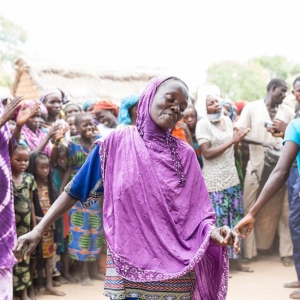Indikatoren in dieser Dimension analysieren, inwieweit Migrantinnen und Migranten hinsichtlich des Zugangs zu grundlegenden sozialen Diensten wie Gesundheit, Bildung und soziale Sicherheit den gleichen Status wie Bürgerinnen und Bürger haben. Es beschreibt die Rechte von Migrantinnen und Migranten auf Familienzusammenführung, Arbeit, Aufenthalt und Staatsbürgerschaft. Die Ratifizierung der wichtigsten internationalen Konventionen fällt ebenfalls in diesen Bereich.main.
Indikatoren in dieser Dimension bewerten die institutionellen, rechtlichen und regulatorischen Rahmenbedingungen der Länder im Zusammenhang mit Migrationspolitik. Dimension 2 beinhaltet auch das Vorhandensein von nationalen Migrationsstrategien, die mit Entwicklungspolitik und -ansätzen im Einklang stehen, sowie die institutionelle Transparenz und Kohärenz in Bezug auf Migrationsmanagement. In diesem Bereich wird auch untersucht, inwieweit Regierungen Migrationsdaten erheben und verwenden.
Diese Dimension konzentriert sich auf die Bemühungen von Ländern, in migrationsbezogenen Fragen mit anderen Staaten und einschlägigen nichstaatlichen Akteuren, einschließlich Organisationen der Zivilgesellschaft und des Privatsektors, zusammenzuarbeiten. Kooperation kann zu Verbesserungen der Regierungsführung führen, indem Standards angeglichen und angehoben, der Dialog intensiviert und Strukturen der Bewältigung von Herausforderungen geschaffen werden.
Diese Dimension umfasst Indikatoren für die Politik der Länder zur Steuerung des sozioökonomischen Wohlergehens von Migrantinnen und Migranten, z.B. die Anerkennung der Bildungs- und Berufsqualifikationen von Migrantinnen und Migranten, Bestimmungen zur Regelung der Studentenmigration und das Bestehen bilateraler Arbeitsabkommen zwischen Ländern. Die Indikatoren konzentrieren sich gleichermaßen auf Maßnahmen und Strategien im Zusammenhang mit dem Engagement der Diasporamitglieder und den grenzüberschreitenden Geldtransfers von Migrantinnen und Migranten
Diese Dimension befasst sich mit der Art und dem Grad der Bereitschaft von Ländern, wenn sie mit Mobilitätsdimensionen von Krisen konfrontiert sind, die entweder mit Katastrophen, der Umwelt und/oder Konflikten zusammenhängen. Die Fragen werden verwendet, um die Prozesse für Staatsangehörige und Ausländer sowohl während als auch Katastrophen zu ermitteln, einschließlich der Frage, ob humanitäre Hilfe für Migrantinnen und Migranten genauso verfügbar ist wir für Bürgerinnen und Bürger.
Diese Dimension analysiert den Ansatz der Länder zum Migrationsmanagement bezüglich Grenzkontroll- und Grenzschutzmaßnahmen, Zulassungsvoraussetzungen für Migranten, Vorbereitung und Flexibilität bei erheblichen und unerwarteten Wanderungsbewegungen sowie die Bekämpfung des Menschenhandels und des Menschenschmuggels von Migrantinnen und Migranten. Es werden auch die Bemühungen und Anreize zur Unterstützung der Integration der zurückkehrenden Staatsbürgerinnen und -burger bewertet.
This country Profile describes examples of well-developed areas of the Republic of Kenya governance structures and areas with potential for further development, as evaluated through the six domains of the Migration Governance Indicators (MGI). These address migrants’ rights, a “whole-of-government” approach, partnerships, socioeconomic well-being of migrants, the mobility dimensions of crises, and safe and orderly migration.
Click the icons on the wheel to explore the key findings.
The Migration Governance Indicators (MGI) initiative is a policy-benchmarking programme led by the International Organization for Migration (IOM) and implemented with research and analysis from the Economist Impact. Funding is provided by IOM Member States.
Migration governance: Examples of well-developed areas
- The Refugees Act (2021) gives refugees in Kenya access to education, livelihoods and integration opportunities.
- The Independent Electoral and Boundaries Commission developed in 2021 detailed regulations and procedures to allow diaspora registration and voting in the 2022 general elections.
- The Children Act (2010) has provisions for protecting migrant children.
Areas with potential for further development
- Kenya does not have bilateral agreements on the portability of social security benefits and entitlements with other countries.
- There is no specific policy or strategy to combat hate crimes, violence and xenophobia against migrants.
Migration governance: Examples of well-developed areas
- The National Coordination Mechanism on Migration coordinates migration initiatives at the local, national, regional and international levels by steering migration debates and dialogue.
- The government regularly collect and publish migration data through the national census, periodic surveys, and compilation of administrative data.
- Kenya is a signatory to the East African Community One Stop Border Posts Act of 2016, which regulates the establishment of border controls, and provides for the application of border control laws in the control zones of the adjoining states.
- The Kenya Institute of Migration Studies offers capacity-building programmes for migration practitioners within the region.
Areas with potential for further development
- The 2018 draft Kenya National Migration Policy has not been approved as of 2022.
- There is no evidence of vertical policy coherence efforts in migration governance in Kenya.
Migration governance: Examples of well-developed areas
- The government participates in several regional consultative processes, including the Common Market for Eastern and Southern Africa and the East African Community.
- Kenya’s Central Organization of Trade Unions signed a cooperative agreement with the Kuwait Trade Union Federation in 2019 to address issues affecting workers who migrate from Kenya to Kuwait.
- The government engages civil society organizations and the private sector in national and regional migration policy consultations.
Areas with potential for further development
- The National Diaspora Council envisioned in the Kenya Diaspora Policy (2014) is not yet operating.
Migration governance: Examples of well-developed areas
- Kenya Labour Market Information System monitors labour market demand and provides information on the public and private sectors.
- The Kenya National Qualifications Authority sets standards for recognizing qualifications obtained inside and outside Kenya.
- Kenya has signed several bilateral labour agreements, including the 2021 agreement with the United Kingdom that aims to increase the number of professionals from the health sector to work in the UK Health Service.
Areas with potential for further development
- The draft National Labour Migration Policy updated in 2021 awaits approval by the Cabinet.
- Kenya has not ratified the International Convention on the Protection of the Rights of All Migrant Workers and Members of their Families (1990).
Migration governance: Examples of well-developed areas
- The National Disaster Risk Management Policy of 2017 provides policy guidelines for disaster mitigation, preparedness, response and recovery.
- The Ministry of Foreign Affairs has a strategy for providing emergency services for Kenyan Citizens in the diaspora, which includesstandard mechanisms for the relocation and evacuation of Kenyan nationals to safer places or their return to Kenya.
Areas with potential for further development:
- Kenya lacks a harmonized disaster risk management legislation and institutional frameworks that address the needs of migrants before, during and after emergencies and disasters.
- The crisis communication systems are limited, uncoordinated and do not address the needs of migrants.
- There is no policy or strategy to promote sustainable reintegration of migrants who fled the country during a crisis.
Migration Governance: examples of well-developed areas
- Immigration officers and other migration professionals are regularly trained on current migration trends and practices.
- Migration practitioners undertake a nine-month Post Graduate Diploma in Migration Studies Course and other short-term courses provided by the Kenya Institute of Migration Studies.
- In July 2021, the Government launched the Kenya Coordinated Border Management Programme at the Kenya School of Government.
- Kenya and Ethiopia signed in 2021 an operational procedure manual for the Moyale One Stop Border Post, aimed at boosting trade and movement between the two countries.
Areas with potential for further development:
- Migrants in an irregular situation can be detained and held in general police custody and immigration holding facilities.
- There are no formal cooperation agreements in place to trace and identify missing migrants.




